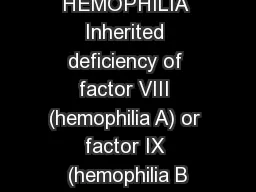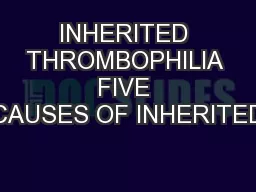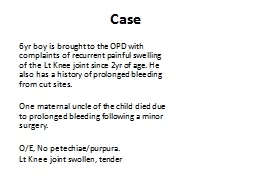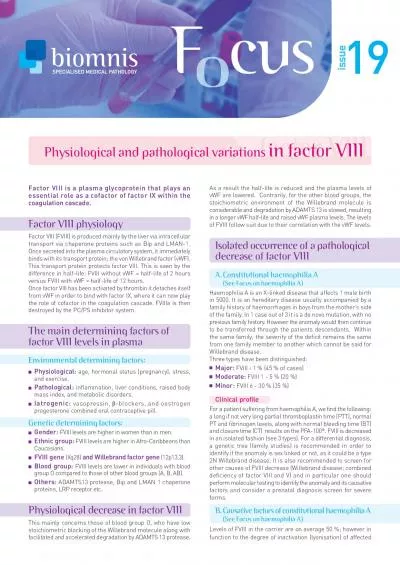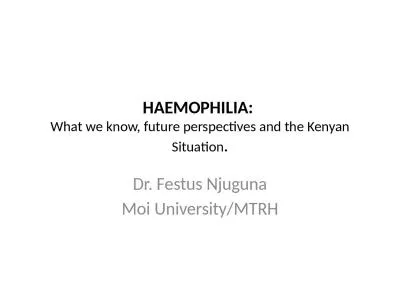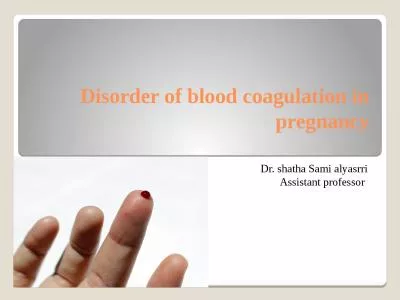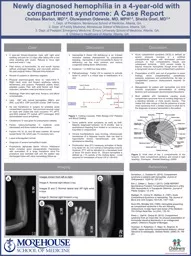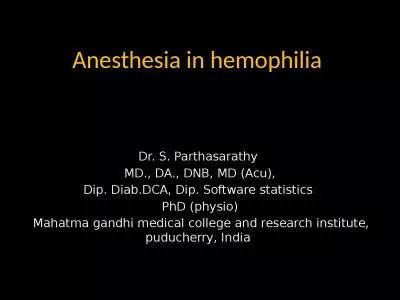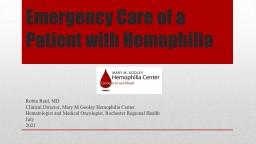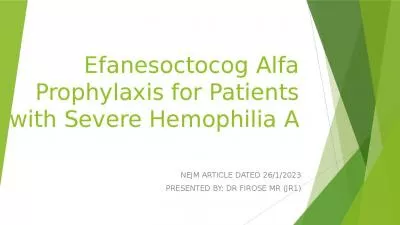PPT-Hemophilia HEMOPHILIA Inherited deficiency of factor VIII (hemophilia A) or factor IX
Author : liane-varnes | Published Date : 2019-03-15
Sexlinked inheritance almost all patients male Female carriers may have mild symptoms Most bleeding into joints muscles mucosal and CNS bleeding uncommon Severity
Presentation Embed Code
Download Presentation
Download Presentation The PPT/PDF document "Hemophilia HEMOPHILIA Inherited deficien..." is the property of its rightful owner. Permission is granted to download and print the materials on this website for personal, non-commercial use only, and to display it on your personal computer provided you do not modify the materials and that you retain all copyright notices contained in the materials. By downloading content from our website, you accept the terms of this agreement.
Hemophilia HEMOPHILIA Inherited deficiency of factor VIII (hemophilia A) or factor IX: Transcript
Download Rules Of Document
"Hemophilia HEMOPHILIA Inherited deficiency of factor VIII (hemophilia A) or factor IX"The content belongs to its owner. You may download and print it for personal use, without modification, and keep all copyright notices. By downloading, you agree to these terms.
Related Documents

